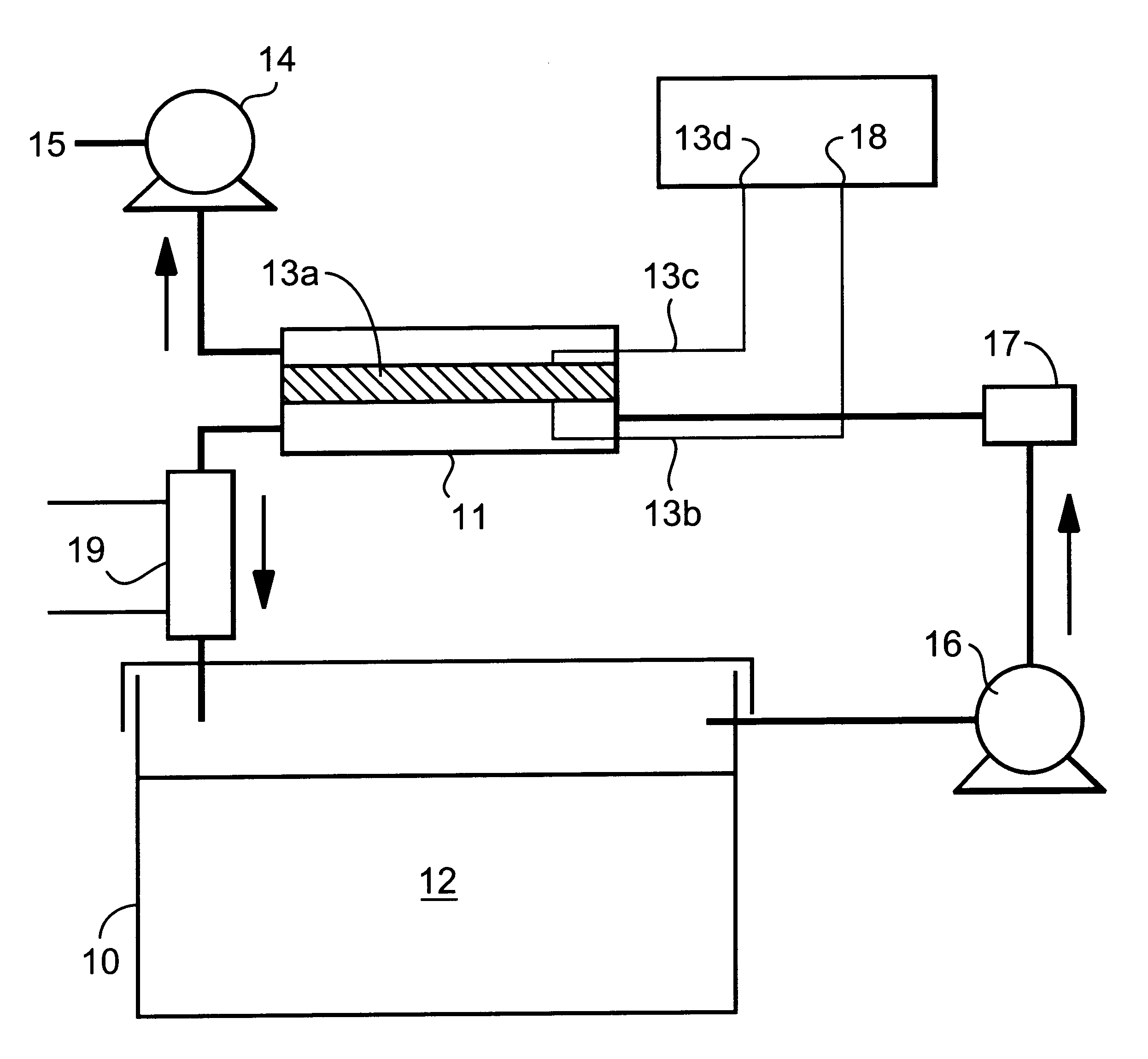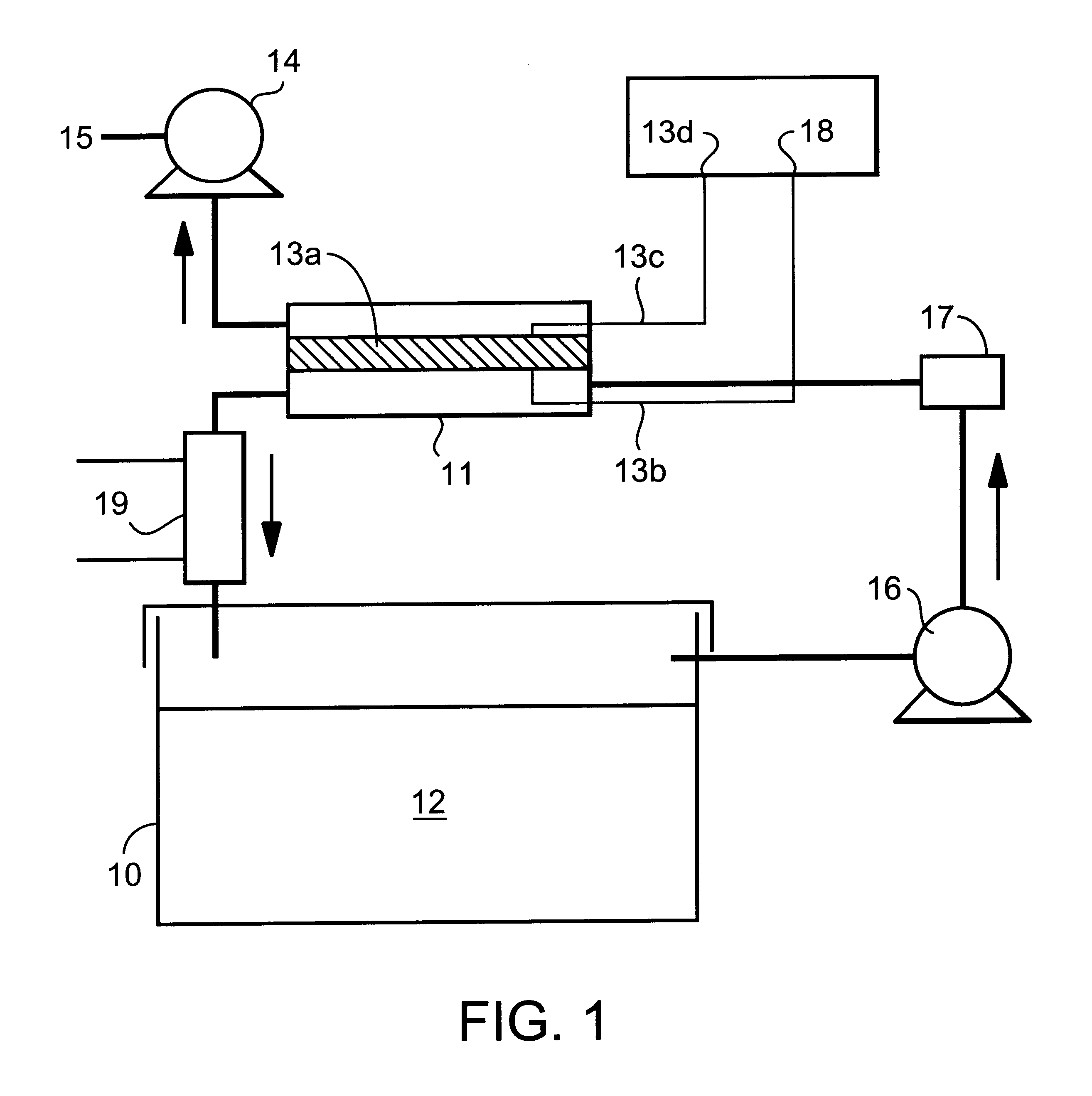Process for reducing the oxidation of food products by electrochemical extraction of oxygen
a technology of electrochemical extraction and food products, applied in the direction of melt solutions, single crystal growth details, normal temperature solutions, etc., can solve the problems of reducing the smoke point the oxidation of some of its components, and the shortening of the life of the oil bath, so as to reduce or eliminate the detrimental effects of the presen
- Summary
- Abstract
- Description
- Claims
- Application Information
AI Technical Summary
Benefits of technology
Problems solved by technology
Method used
Image
Examples
Embodiment Construction
In the process as described above, the solid electrolyte is operated according to a purely electrochemical mechanism, generated by a current generator or according to an electrochemical semi-permeability process, generated by the oxygen partial pressure difference between each of the faces of the said electrolyte. In the case of a purely electrochemical mechanism, the solid electrolyte is in contact with two electrodes, respectively an anode and a cathode which are porous to the gases and are themselves connected to a current generator.
According to a first variant of the process as defined above, the solid electrolyte comprises at least one doped ceramic oxide. The doped ceramic oxide is for example selected from zirconia (ZrO.sub.2), thoria (ThO.sub.2), cerium oxide (CeO.sub.2), hafnium oxide (HfO.sub.2) and bismuth oxide (Bi.sub.2 O.sub.3), doped with one or more oxides selected from magnesium oxide (MgO), yttrium oxide (Y.sub.2 O.sub.3), calcium oxide (CaO), lanthanum oxide (La.s...
PUM
 Login to View More
Login to View More Abstract
Description
Claims
Application Information
 Login to View More
Login to View More - R&D
- Intellectual Property
- Life Sciences
- Materials
- Tech Scout
- Unparalleled Data Quality
- Higher Quality Content
- 60% Fewer Hallucinations
Browse by: Latest US Patents, China's latest patents, Technical Efficacy Thesaurus, Application Domain, Technology Topic, Popular Technical Reports.
© 2025 PatSnap. All rights reserved.Legal|Privacy policy|Modern Slavery Act Transparency Statement|Sitemap|About US| Contact US: help@patsnap.com



